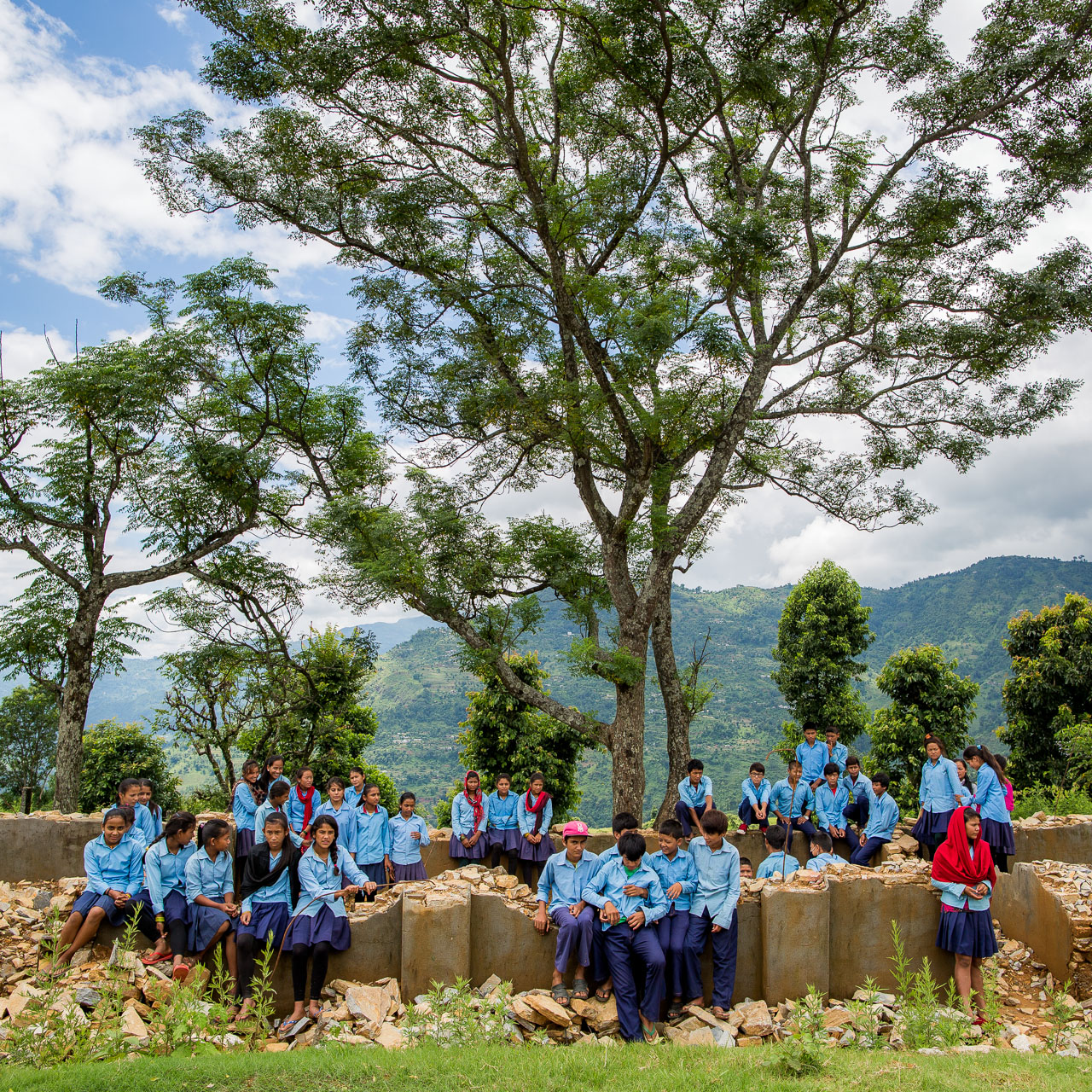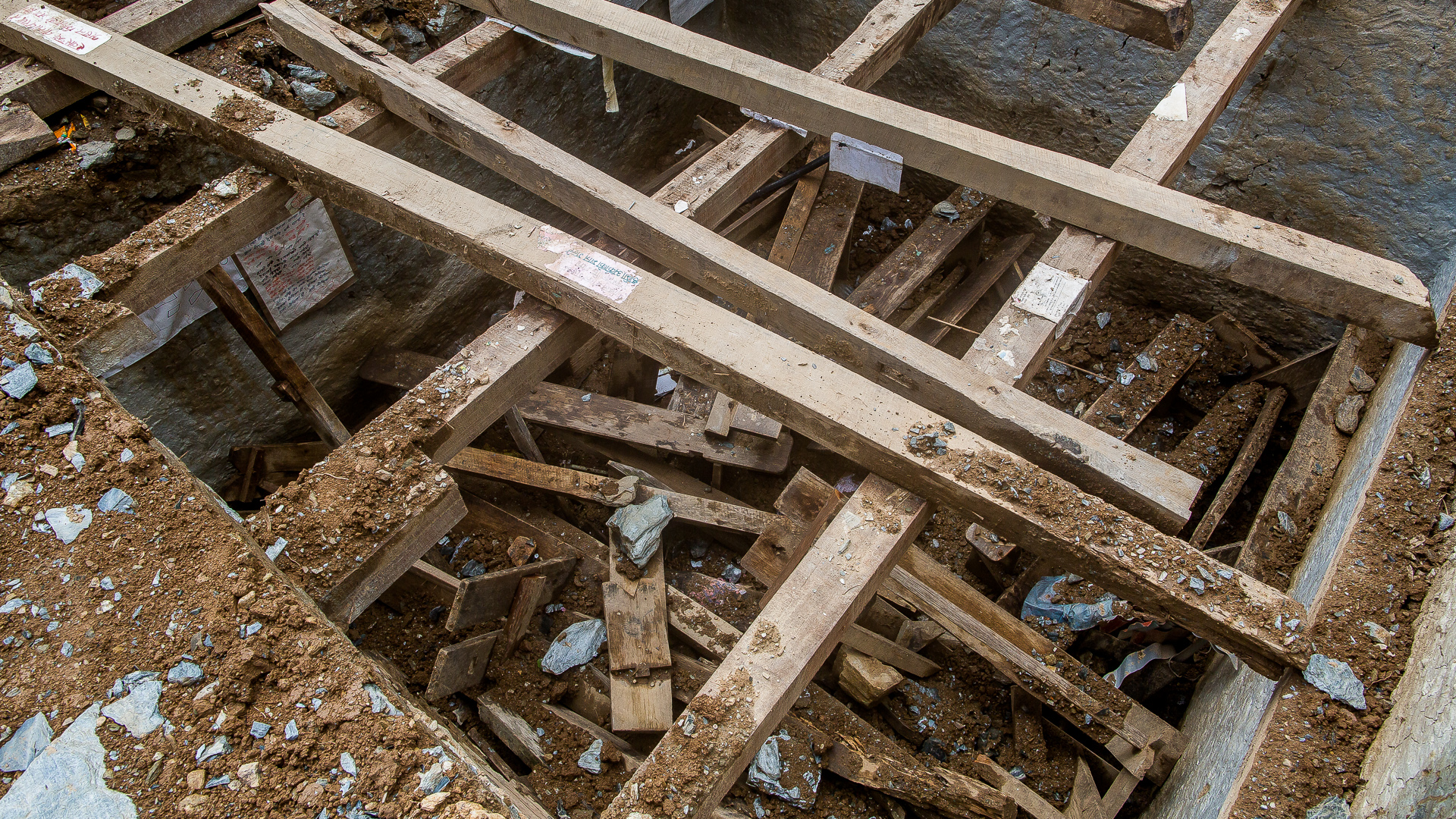This lady had fallen over and injured her face just a few days earlier. As there is no proper healthcare her injuries are not recovering well.
Lady who showed me the way from Baluwa to Barpak.
Waterfall on the way.
On my way to Barpak I stopped in Mandre (close to Tilidana and Tunsighang). Here every house had been destroyed. While having tea there a man from the village described to me what happened when the earthquake struck. They were close to the house when the ground started shaking. Fortunately most of the people were not inside. The stone walls of their houses starting to dance when the earthquake started. After some time all the walls and then the roofs collapsed. All the houses were destroyed.
The village of Mandre has been completely destroyed.
Earthquake proof temporary shelters in Mandre.
He explained that he found some people completely buried under piles of stone. Others were screaming because they had been injured by falling stones and wood. There is no hospital or medical support in these villages. People died during the following days as result of their untreated crush injuries. Most of the roads and the trails were destroyed so it was very dangerous to try and go to other villages in search of support. The lost not only their houses but also their food stores and in many cases their water supplies too.
Group of porters carrying cement up to slowly start reconstructing their houses.
Lady taking corn leaves from the field to feed their cattle.
This porter was my companion on the way up to Barpak.
In the days following the earthquake the villagers shared food, water and shelter amongst themselves. After a few days they went down to other villages to find food and materials to create safer shelters to protect themselves from the strong sun and heavy monsoon rains. They carried materials up by hand. Still no support had come from outside.
Handing over clothing to a surprised group of Dalit (Untouchable) people in Barpak.
Together with the Dalit (Untouchable) and low caste people of Barpak. They have to live separately from the rest of the village and high caste people should not touch them or come close to them..
Dalit lady.
One week after the earthquake NGO's began arriving to bring food, help with water supplies and wood and iron sheeting to make stronger, safer shelters. The man said that all this time there was no sign of the Nepali government. Nepalis in the past have never had much trust in the government but now in the aftermath of the earthquake they trust it even less. Most of the people I spoke to think that they will get no government support in the future and hope that NGOs will help them to rebuild their houses.
Remains of Barpak.
The gate is the only part left of this house.
Most people in this area now realize that stone buildings with stone roofs in not the safest building style for the future. Unfortunately this means that their beautiful traditional houses will be hard to find in this area, changing the scenery forever. In the past there was a lot of tourism in this area because of the strong cultural traditions and the picturesque stone houses high up in the mountains. Tourists may not be so eager to trek through this harsh and unforgiving environment if they are to be greeted with stronger and safer yet less aesthetically pleasing modern buildings. It will be a sad thing if the tourism does not recover: bringing these people doubly bad luck.
Barpak and all the plastic shelters.













































































































































































